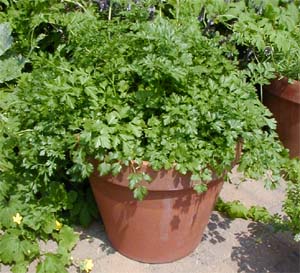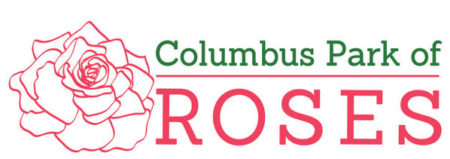With public education as part of its mission, the International Herb Society annually announces its ‘Herb of the Year.’ Herbal candidates must meet two of three criteria in terms of use: medicinal, culinary or decorative. The 2021 selection is Petroselium crispum, Parsley.

Parsley is very familiar to most of us since it is widely used in many parts of the world for both culinary and medicinal purposes. We use it to garnish our dishes; add it to soups, stocks, sauces; eat it in large amounts, such as in tabbouleh; and use it in various seasoning blends such as fines herbes or bouquet garni.
This herb is very popular not only because of the flavor it imparts to foods, but also because it is a powerhouse of nutrition and dietary fiber. It is rich in vitamins (including vitamins A, C, K and folate) and minerals (including potassium, iron, zinc, calcium, phosphorous, magnesium). Native to the Mediterranean region, parsley has been an important part of the diet of the people of that region for more than 2,000 years. It has been used to treat bad breath and bladder infections, strengthen bones, aid digestion, and an antiseptic poultice to treat bruises, sprains and wounds.

Male Eastern Swallowtail Butterfly
Parsley is also a wonderful pollinator plant and attracts beneficial insects to the garden. It is a host plant to swallowtail butterflies.
There are three varieties of parsley:
▪ Petroselium crispum, more commonly known as Curly Leafed Parsley, is a hardy biennial.* It has a mild flavor.
▪ Petroselium crispum, var neapolitanI, more commonly known as Flat-Leafed, Italian or French Parsley, is a hardy biennial.* It has a stronger flavor than the curly-leaved parsley.
▪ Petroselium crispum var. tuberosa is the less commonly grown parsley variety. It is also called Hamburg or Turnip Root Parsley and is primarily grown for its long edible tap root. It is grown as an annual.
How to: Grow – Parsley seeds are notoriously slow to germinate. To speed germination, freeze the seeds, then thaw them in the refrigerator; repeat the process several times. Sow seeds indoors in plug trays or pots or outside in soil in early spring. Parsley grows best in full sun and moist, well-drained, fertile soil rich in organic matter.
Harvest – Cut the leafy stems at their base to generate new growth.
Store – Chop and freeze in either water or olive oil in ice cube trays. You can dry the leaves, too, but the intensity of flavor is greatly reduced.
*Biennial plants produce leaves in the first year, then flower and set seeds in their second year before dying.
